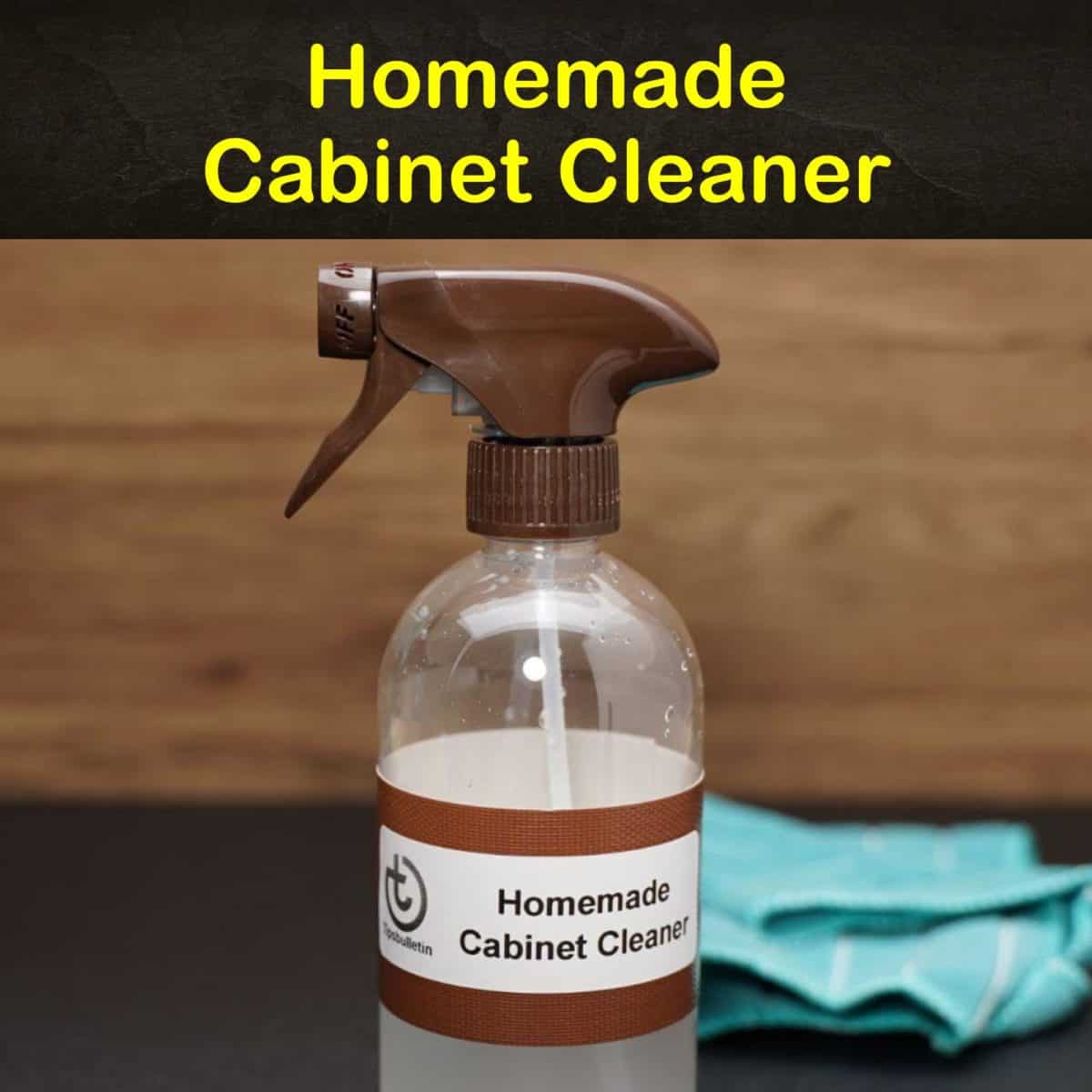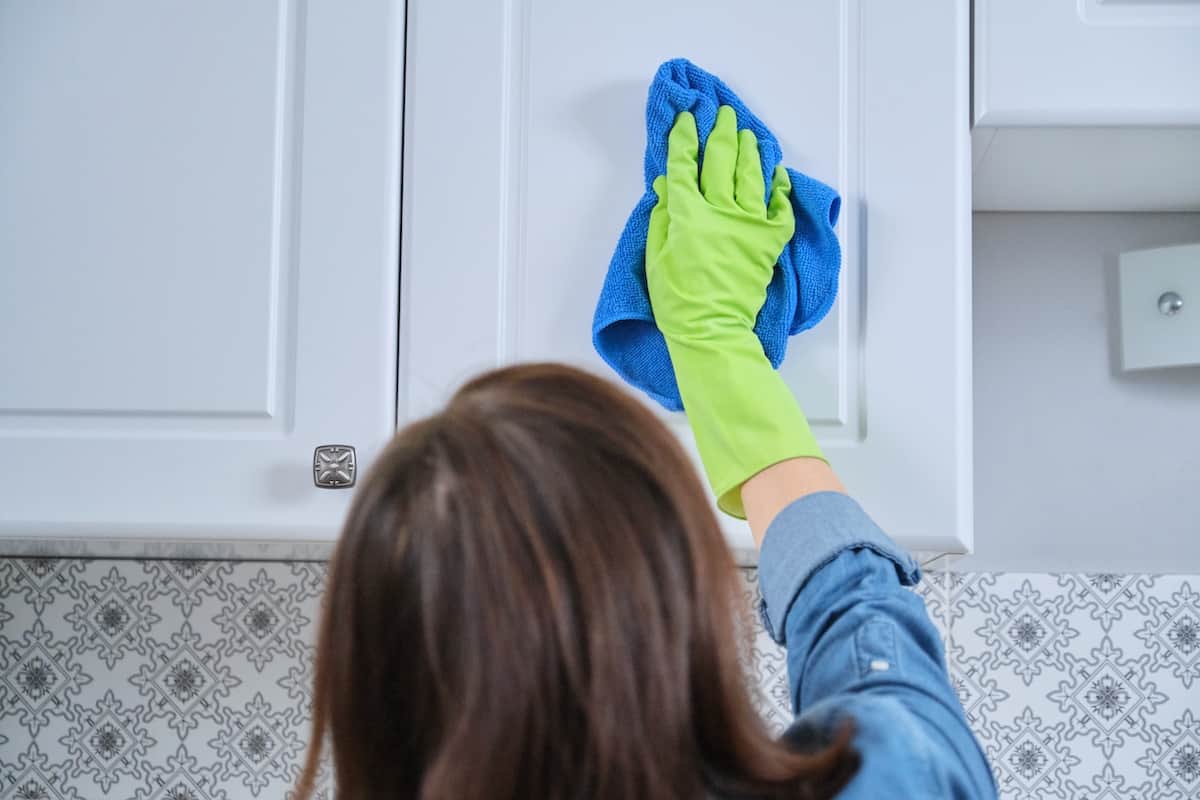The Power of Homemade

You’ve already taken the first step towards a cleaner, greener home by choosing to make your own wood cabinet cleaner. But why go through the effort of DIY when commercial cleaners are readily available? The answer lies in the numerous benefits of homemade solutions.
Benefits of Homemade Wood Cabinet Cleaners
Making your own wood cabinet cleaner offers a variety of advantages over commercially available products.
- Control over Ingredients: You can choose natural and non-toxic ingredients, ensuring that your cleaner is safe for your family, pets, and the environment. This is especially important for families with young children or pets who might be sensitive to harsh chemicals.
- Cost-Effectiveness: Homemade cleaners are typically much cheaper than store-bought options. You can often find the ingredients in your pantry or at a fraction of the cost of a pre-made cleaner.
- Effectiveness: Many homemade cleaners are just as effective, if not more effective, than commercial cleaners. The key is to use the right ingredients and proportions.
Environmental Impact of Homemade Cleaners
The environmental impact of homemade cleaners is significantly less than that of commercial cleaners.
- Reduced Packaging Waste: By making your own cleaner, you eliminate the need for plastic bottles and packaging that often end up in landfills.
- Less Toxic Runoff: Many commercial cleaners contain harsh chemicals that can pollute waterways when they are washed down the drain. Homemade cleaners, using natural ingredients, are less likely to cause environmental damage.
- Reduced Carbon Footprint: The production and transportation of commercial cleaners contribute to greenhouse gas emissions. By making your own cleaner, you reduce your carbon footprint.
Personal Experiences with Homemade Cleaners
Many people have had positive experiences with homemade wood cabinet cleaners. For example, one person shared that their homemade cleaner was able to remove stubborn grease and grime from their cabinets without leaving behind any streaks or residue. Another person reported that their homemade cleaner left their cabinets smelling fresh and clean, without any harsh chemical odors. These anecdotes demonstrate the effectiveness and pleasant experience associated with homemade cleaners.
Recipes for Success

Now that you’re ready to embrace the power of homemade wood cabinet cleaner, let’s dive into some specific recipes. Each formula offers a unique approach to cleaning and polishing your wood surfaces.
Homemade Wood Cabinet Cleaner Recipes
These recipes are easy to follow and use readily available ingredients. You can customize them to suit your specific needs and preferences.
Recipe 1: The Simple Solution
This recipe is a classic for a reason: it’s simple, effective, and uses common household ingredients.
- Gather your ingredients:
- 1 cup distilled water
- 1/4 cup white vinegar
- 1 tablespoon olive oil
- Combine the ingredients in a spray bottle. Shake well to mix.
- Spray the cleaner onto a soft cloth, then wipe down your cabinets. Work in the direction of the wood grain for a polished look.
- Buff the cabinets with a dry cloth to remove any residue and enhance shine.
Recipe 2: The Citrus Boost
This recipe adds a refreshing citrus scent to your cleaning routine.
- Gather your ingredients:
- 1 cup distilled water
- 1/4 cup white vinegar
- 1/4 cup lemon juice
- 1 tablespoon olive oil
- Combine the ingredients in a spray bottle. Shake well to mix.
- Spray the cleaner onto a soft cloth, then wipe down your cabinets. Work in the direction of the wood grain for a polished look.
- Buff the cabinets with a dry cloth to remove any residue and enhance shine.
Recipe 3: The Deep Clean
This recipe is perfect for tackling tougher grime and restoring a deep shine to your cabinets.
- Gather your ingredients:
- 1 cup distilled water
- 1/4 cup white vinegar
- 1/4 cup mineral oil
- 1 teaspoon castile soap
- Combine the ingredients in a spray bottle. Shake well to mix.
- Spray the cleaner onto a soft cloth, then wipe down your cabinets. Work in the direction of the wood grain for a polished look.
- Buff the cabinets with a dry cloth to remove any residue and enhance shine.
Comparing Homemade Wood Cabinet Cleaner Recipes
| Recipe | Ingredients | Cleaning Properties | Potential Drawbacks |
|---|---|---|---|
| Simple Solution | Distilled water, white vinegar, olive oil | Cleans gently, removes dust and grime, adds a subtle shine | May not be effective on stubborn stains |
| Citrus Boost | Distilled water, white vinegar, lemon juice, olive oil | Cleans gently, removes dust and grime, adds a subtle shine, fresh citrus scent | May not be effective on stubborn stains, lemon juice can lighten wood over time |
| Deep Clean | Distilled water, white vinegar, mineral oil, castile soap | Cleans deeply, removes stubborn stains, restores shine, conditions wood | May leave a slight oily residue, mineral oil can attract dust |
Beyond Cleaning: Homemade Wood Cabinet Cleaner

It’s not just about getting rid of dust and grime; it’s about preserving the natural beauty of your wood cabinets. A well-maintained cabinet can be a source of pride and a valuable addition to your home.
Applying Homemade Cleaners Effectively
The application technique for your homemade cleaner will depend on the type of finish your cabinets have.
- Oil-Based Finishes: These finishes are often found on older cabinets and provide a durable, protective layer. Apply your cleaner using a soft cloth, gently wiping in the direction of the wood grain. Avoid excessive scrubbing, as this can damage the finish.
- Lacquer Finishes: Lacquer finishes are known for their shine and durability. They are also relatively easy to clean. Apply your cleaner with a soft cloth, using gentle circular motions. Avoid applying too much pressure, as this can scratch the surface.
- Polyurethane Finishes: Polyurethane finishes are very durable and resistant to scratches and stains. They are also easy to clean. Apply your cleaner with a soft cloth, using gentle circular motions. Avoid using harsh chemicals or abrasive cleaners, as these can damage the finish.
Homemade wood cabinet cleaner – Making your own wood cabinet cleaner is a great way to save money and avoid harsh chemicals. After a long day, it’s nice to unwind in a cozy spot, like a small comfy chair for bedroom , before tackling your next cleaning project.
Once your cabinets are sparkling clean, you’ll be able to enjoy them even more!
Homemade wood cabinet cleaner is a great way to keep your furniture looking its best, especially if you’re going for a certain aesthetic. For example, if you’re aiming for a serene and calming vibe, like a purple grey blue bedroom , you’ll want to make sure your cabinets are free of any harsh chemicals or streaks.
A simple solution of vinegar and water can work wonders, leaving your cabinets sparkling and ready for your relaxing retreat.
